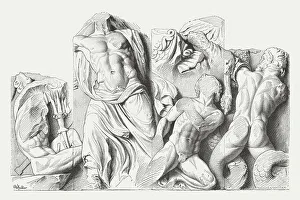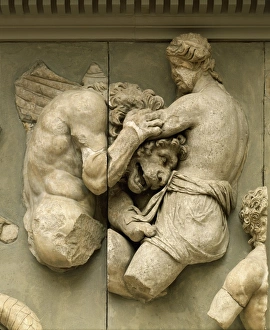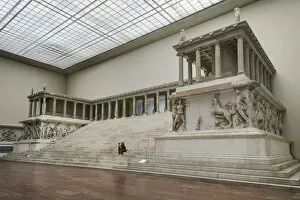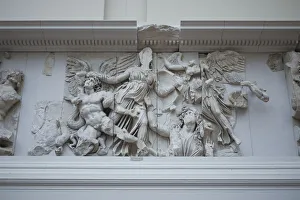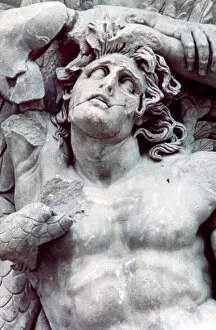Pergamon Altar Collection
"Discover the Magnificence of the Pergamon Altar: A Glimpse into Hellenistic Civilization" Step back in time and immerse yourself in the grandeur of the Pergamon Altar
All Professionally Made to Order for Quick Shipping
"Discover the Magnificence of the Pergamon Altar: A Glimpse into Hellenistic Civilization" Step back in time and immerse yourself in the grandeur of the Pergamon Altar, a remarkable masterpiece that has captivated art enthusiasts for centuries. This iconic structure, located in Bergama, Turkey, is a testament to the artistic brilliance and cultural richness of ancient Asia Minor. One cannot help but be mesmerized by the intricate details showcased on this altar. The Relief from Pergamon Altar, published in 1881, offers us a glimpse into its splendor. Amongst these captivating reliefs is one depicting a fierce battle between a giant with a lion head and the Goddess Aether herself – an awe-inspiring portrayal of mythical power and strength. The Great Frieze of the Pergamon Altar takes us deeper into this narrative tapestry. Here we witness another enthralling scene where a goddess hurls a vase adorned with a snake at yet another colossal figure – an embodiment of divine intervention against evil forces. Now housed within Berlin's renowned Pergamon Museum, this architectural marvel continues to amaze visitors from around the world. Its sheer size and intricacy are truly breathtaking; it stands as an enduring symbol of human creativity and ingenuity. Amongst its many captivating figures is Athena, depicted on one section of the frieze. Her presence exudes wisdom and grace as she becomes part of this timeless tale etched onto marble walls. Dating back to 180-160 BC during Hellenistic Civilization's zenith, it serves as both an archaeological treasure trove and historical artifact. Each detail tells stories untold for centuries until now - tales that transport us through time itself. As we explore further into its depths, we encounter more wonders such as Telephus Frieze - showcasing scenes filled with emotion and drama dating back to 164-156 BC.

